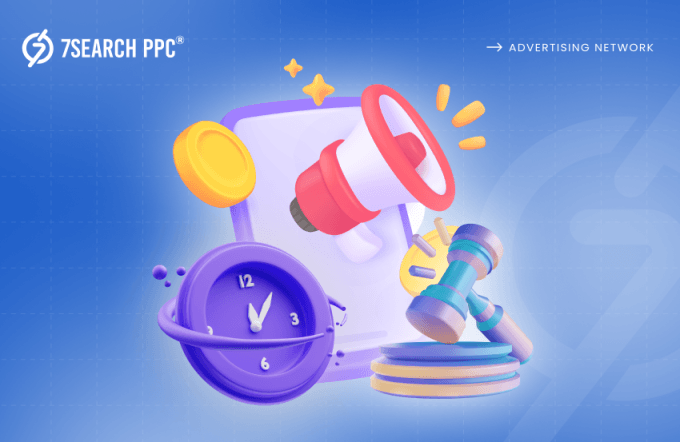In today’s AI era, we can easily manage our routine tasks, such as scheduling appointments, organizing emails, and automating reminders. It also helps us track fitness goals precisely and conveniently. But have you ever thought about how businesses are managing their advertising campaigns? Some of them are still throwing their arrows in the dark.
This means that they don’t give any clue about the actual position of their ad campaigns. The results? Huge financial setbacks. You probably don’t want that setback, right? Try using advertising trackers for your ad campaign.
You invest money in campaigns, but do you know if they are actually reaching the right audience? Ad tracker changes the game by providing insights into your ideal audience, their behavior, and how they engage with your campaigns. With this information, you can refine your online ads to be highly targeted, maximizing their impact and conserving valuable resources.
We believe this brief introduction clearly explains what we will discuss in this blog. Take a moment to review it, as it highlights every crucial detail about the key factor you may be missing in your ad campaign: advertising trackers. Here we go!
Advertising Trackers: The Accurate Insights Provider
No matter how big or small the advertiser is, no one can confidently say that their ad campaign is running successfully without knowing their key metrics, which show the real picture of their online advertising efforts. Suppose you are using advertising trackers for your online campaign, the goal of which is to increase online sales of your furniture business.
Metrics (You got through ad tracker):
- Impressions: 100,000 (the number of times the ad was seen)
- Clicks: 2,000 (the number of times someone clicked on the online ad)
- Click-through Rate (CTR): 2% (Clicks/Impressions= 2000/100,000)
- Conversions: 100 (the number of times someone purchased furniture after clicking the ad)
- Conversion rate: 5% (Conversions/clicks = 100/2000)
It’s Time For Result,
These insights clearly show that your furniture business is getting a decent amount of exposure (100,000 impressions) but could be getting more clicks. The CTR of 2% is a bit low, indicating your ad creative or targeting might need some work. However, those who do click are converting at a healthy rate (5%), suggesting the landing page and offer are relevant.
Overall Status
Your online advertising campaign is generating some sales, but there is room for optimization. You should focus on improving your ad creative and targeting to increase clicks while maintaining a solid conversion rate.
This example shows that with the help of advertising trackers, you gained valuable insights that can help you refine your online advertising strategy for better results.
So, What are Advertising Trackers?
Now, after understanding how they play a crucial role in optimizing ad campaigns, it is time to look at ad trackers’ meaning. These are some effective tools used by advertisers to gather data on how users interact with online ads. This data helps them understand things related to their live ad campaigns.
By tracking crucial information, advertisers can improve their campaigns in several ways:
- First, it allows them to target their ads more effectively, reaching people who are more likely to be interested.
- Second, it helps them measure the success of their campaigns and see which ads are performing well.
The following are the crucial insights that advertising trackers provide to advertisers:
- Ad Reach: How many people saw the ad?
- Engagement: How much time did users spend looking at the online ad? Did they interact with it in any way?
- Effectiveness: Did users click on the ad, leading them to a website or landing page?
Different Types of Advertising Trackers
There are various types of ad trackers used to assess the performance of online advertising campaigns. Some of them are given below. Please have a look:
Impression Tracker
These trackers are 1×1 pixel images embedded in ads, emails, or web pages. Whenever the page loads, the pixel sends data to the analytics platform to register an impression. This helps measure an ad’s reach—the more pixels loaded, the greater the traffic. It’s a good starting point to gauge campaign effectiveness.
Viewability Tracker
Viewability trackers determine whether an ad is actually seen and for how long. They are embedded within ads during rending and measure how much of the ad appears within a user’s viewport. These trackers provide metrics on viewable impressions, which help in understanding the effectiveness of ads beyond mere exposure.
Click and Engagement Tracker
These duo trackers monitor user interaction. Click tracking measures how many times an ad is clicked, which reveals how persuasive it is in prompting action. Engagement tracking provides a deeper analysis by looking at how users interact with the ad itself, such as the time spent and scrolling behavior, to help understand user interest and ad effectiveness beyond just clicks.
URL Tracker
Have you ever wondered where your website visitors come from? URL trackers can help with that. These tools, such as UTM (Urchin Tracking Module) tags, are attached to the end of a URL. When a person clicks the link, the tracker sends information about the source (like an email campaign or social media ad) to the analytics platform.
This is useful for determining which platforms generate the most valuable traffic, making it great for PPC, email marketing, and website ads.
Conversion Tracker
Here is the ultimate test: Did your ad achieve the conversion target you set? Conversion trackers monitor based on key performance indicators (KPIs). They measure the actions users take after viewing the ad. These trackers use pixel-based systems to record quantitative actions such as purchases or sign-ups. Advertisers use them to assess campaign effectiveness, drive desired outcomes, and optimize marketing strategies accordingly.
Benefits of Using Advertising Trackers
Ad trackers provide several benefits, especially for businesses seeking to enhance their marketing strategies. Here is a breakdown of some key advantages:
Data Acquisition
Ad trackers collect a wealth of data on user interactions with ads, such as:
- Clicks
- Conversions
- Time Spent
- Devices Used
- Geographic Location
This detailed data allows for a deeper understanding of your audience and enables you to customize your advertising efforts to better suit their needs.
Segment & Optimize
By monitoring ad performance on various platforms, devices and locations, you can observe how different audience segments engage with your ads. This understanding enables you to make necessary adjustments to optimize your campaigns.
More Insightful Data Analysis
Ad trackers provide detailed reports and analytics, helping you to easily analyze the data collected. This feature lets you spot trends, patterns, and unusual activities in your campaigns, offering important insights for making improvements.
Competitive Research
Some ad trackers have features for competitor analysis, which allow you to monitor your competitors’ performance and compare it with your own. This helps you identify the strong and weak points of advertising strategy. It enables you to make adjustments and stay ahead in the competitive landscape.
Retargeting
Advertising trackers are essential for retargeting. They gather data on what users do, like the pages they visit, the products they look at, and how they interact with ads. This information is then used to create retargeting ads for users who have already shown interest in a brand or its website.
By tracking these activities, advertisers can show targeted ads to users, encouraging them to return to the site and make a purchase or take other actions.
List of Top Advertising Trackers For Marketers
Here are some top ad trackers you can use to make your ad campaign effective.
![]()
Voluum
Voluum is a powerful ad-tracking platform designed for serious advertisers. It goes beyond basic tracking by offering real-time reporting, advanced analytics, and A/B testing to improve campaigns. Its standout feature is the anti-fraud kit, which filters out bot traffic, ensuring that your budget is utilized effectively.
Voluum excels at tracking the entire user journey, from the first click to the final conversion. It allows advertisers to pinpoint areas for improvement across the sales journey.
RedTrack
This advertising tracker is a cloud-based tool designed for affiliates, media buyers, and agencies. It is used to track clicks, conversions, and impressions and provides detailed reports. One of its amazing features, which holds our attention, is real-time data analysis, which helps users make quick campaign decisions.
RedTrack automates tasks such as optimization to improve results. It also provides advanced analytics for an in-depth understanding of campaign performance using various metrics. Another important feature is its Conversion Path, which illustrates how each channel influences the final conversion, providing valuable insights.
ClickMagick
ClickMagick is one of the most popular and widely utilized cloud-based tools for tracking and improving online ads. It suits marketers at any skill level with its range of features. Its TrueTracking tech ensures precise tracking by fixing common issues like referrer spam and cookie inconsistencies.
This clarity enables you to assess the performance of your ads. It provides in-depth analytics for exploring campaign details, tracking clicks, conversions, and sales paths to identify the most effective channels. You can also test various landing pages and ad content to see what works for your audience. ClickMagick is great for marketers who want an easy-to-use tool with strong tracking and improvement options.
SegMetrics
SegMetrics is a tool for tracking ads and analyzing marketing efforts in depth. It goes beyond just tracking clicks, giving detailed insights into how users behave across different marketing channels. It uses advanced attribution models that look beyond the last-click method to understand how each interaction leads to conversions.
This helps in the smarter allocation of campaign resources. It lets you create custom reports that focus on the specific data points important to your campaigns. It also supports cohort analysis, which tracks how groups of users behave over time and is useful for understanding customer trends and life cycles.
Overall, SegMetrics is ideal for marketers needing advanced analytics for campaign insights.
AdsBridge
AdsBridge is designed for affiliates and media buyers. It is famous for providing tools to track and enhance advertising campaigns. It stands out with features like:
- Click and conversion tracking
- A flexible landing page builder
- Split testing options.
Its strength lies in optimizing landing pages to boost conversion rates effectively. AdsBridge also makes it easy to connect with multiple affiliate networks by automating postback parameter setup. It ensures smooth communication and detailed performance reports. For marketers, it’s a valuable asset for maximizing returns on investment and simplifying the management of advertising efforts.
Conclusion
Buying traffic through a reliable ad network only gives you good results if you apply an ad-tracking strategy alongside it. Advertising trackers are crucial tools for businesses to improve their online ad campaigns. They offer important insights into how users interact with ads and how campaigns perform.
This helps advertisers target the ideal audience, increase click-through rates, and achieve more conversions. Using trackers such as impression, click, and conversion, you can gain a clear picture of your ad campaigns and use data to make smarter decisions for better outcomes.
Frequently Asked Questions (FAQs)
What are advertising trackers?
Ans. Ad trackers are tools that advertisers use to collect data on how users interact with their online ads. This data helps them understand how well their ads are performing and make improvements.
What kind of data do advertising trackers collect?
Ans. Clicks on your ads, Conversions (e.g., purchases, sign-ups), Time spent looking at your ads, Devices used to view your ads, Geographic location of users, etc, are some kinds of data that advertising trackers collect.
Are advertising trackers safe?
Ans. Some people are concerned about the privacy implications of ad trackers. However, most reputable ad trackers are designed to collect data anonymously.
What are the different types of advertising trackers?
Ans. There are different types of ad trackers, such as viewability trackers, click & engagement trackers, URL trackers, impression trackers, and conversion trackers.
Are advertising trackers difficult to use?
Ans. The ease of using ad trackers can vary depending on the specific trackers you use. Some advertising trackers are designed for beginners, while others are more difficult and require more technical expertise.

















